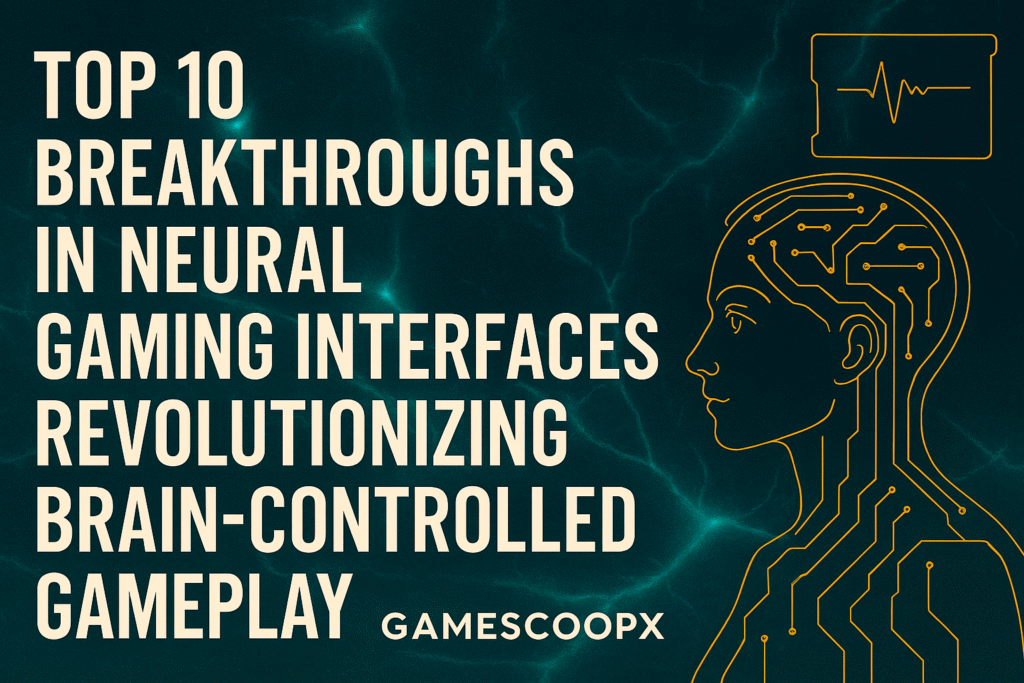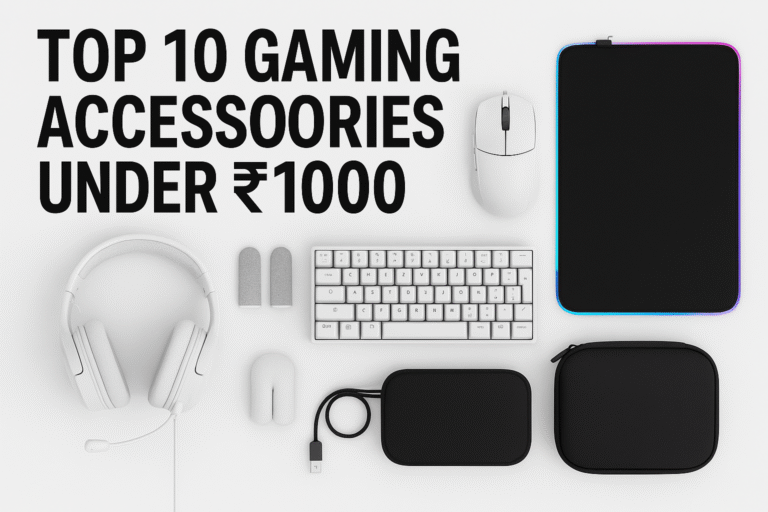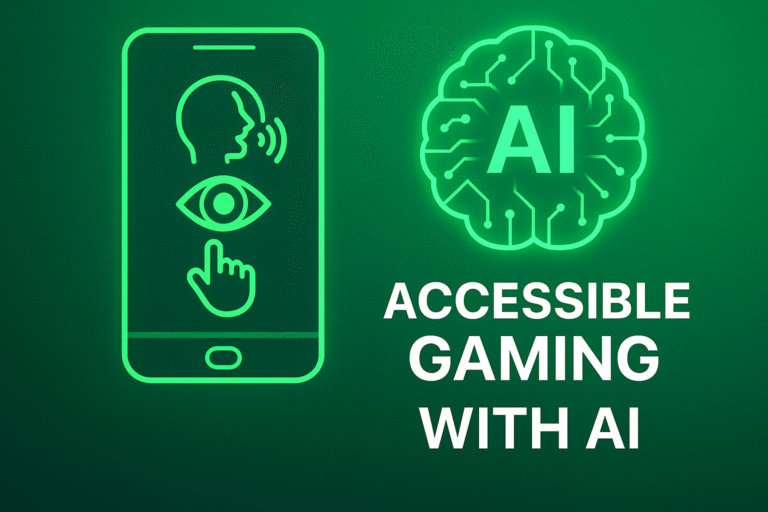
Discover how neural gaming interfaces are transforming gameplay—experience the power of brainwaves, immersive design, and futuristic interaction in a single glance.”
Neural Gaming Interfaces Thumbnail
Table of Contents
- What Are Neural Gaming Interfaces?
- The Rise of Brain-Controlled Gameplay
- Immersion Redefined Through Thought
- Emotional Feedback & Adaptive Environments
- Accessibility for All Gamers
- Neural Interfaces in VR & AR
- Cognitive Enhancement & Flow States
- Ethical Concerns & Data Privacy
- Top Tools & Companies Driving Neural Gaming
- Conclusion – The Future of Neural Gaming Interfaces
1. What Are Neural Gaming Interfaces?
Neural gaming interfaces—also known as brain-computer interfaces (BCIs)—allow players to control games using brain signals instead of physical input. These systems interpret electrical activity from the brain (via EEG or implants) and convert it into in-game commands.
“Your thoughts become the controller—no buttons, no lag, just pure mental input.”
2. The Rise of Brain-Controlled Gameplay
Companies like Neuralink, OpenBCI, and NeuroSky are pioneering brainwave-reading headsets that let players move characters, cast spells, or trigger actions using pure mental focus.
🔹 Real-World Examples:
✔ Neuralink’s test subject played Counter-Strike using only thoughts
✔ EEG headsets allow players to navigate menus or fire weapons by concentrating
✔ AR games are now respond to the gaze and mental intent of poeple
3. Immersion Redefined Through Thought
Neural interfaces eliminate the physical barrier between player and game. Instead of pressing buttons, players think their way through challenges.
🔹 Immersive Features:
✔ Real-time neural input = zero latency
✔ Seamless interaction with game environments
✔ Personalized experiences based on mental state
4. Emotional Feedback & Adaptive Environments
Now a days Games can now read your emotions—stress, excitement and fear—and adapt it in real time.
🔹 Dynamic Adjustments:
✔ Horror games intensify when fear is detected
✔ Puzzle games ease up when frustration spikes
✔ Music, lighting, and pacing shift based on brainwave feedback
5. Accessibility for All Gamers
For players with limited mobility, neural interfaces offer new levels of inclusion.
🔹 Empowering Features:
✔ Control characters without physical movement
✔ Customize input mappings to suit cognitive patterns
✔ Enable the full participation in the competitive and the casual gaming
6. Neural Interfaces in VR & AR
BCIs are transforming virtual and augmented reality by enabling mind-driven interaction.
🔹 VR/AR Enhancements:
✔ Navigate 3D spaces using thought
✔ Trigger AR overlays with mental focus
✔ Reduce motion sickness by syncing brain signals with visuals
7. Cognitive Enhancement & Flow States
Neural gaming isn’t just about control—it’s about mental optimization.
🔹 Performance Benefits:
✔ Improve reaction time and focus
✔ Enter “flow states” faster
✔ Train memory and decision-making through neurofeedback
8. Ethical Concerns & Data Privacy
Great power brings significant responsibility—especially when it involves the deeply personal nature of neural data.
🔹 Key Concerns:
✔ Who owns your brainwave data?
✔ Can games manipulate emotions or decisions?
✔ How do we prevent over-reliance on neural input?
9. Top Tools & Companies Driving Neural Gaming
🔧 Leading Platforms & Tools:
✔ Neuralink – Implant-based neural control
✔ OpenBCI Galea – EEG + EMG headset for developers
✔ NeuroSky MindWave – Affordable EEG for gamers
✔ Valve x OpenBCI – Exploring brainwave-driven VR
✔ Neuroba – Real-time brainwave feedback for adaptive gameplay
10. Conclusion – The Future of Neural Gaming Interfaces
Neural gaming interfaces are redefining how we play, feel, and connect with games. From brain-controlled gameplay to emotionally adaptive environments, the future is immersive, inclusive, and mind-powered.
“In the next decade, your thoughts won’t just shape your strategy—they’ll shape the game itself.”



